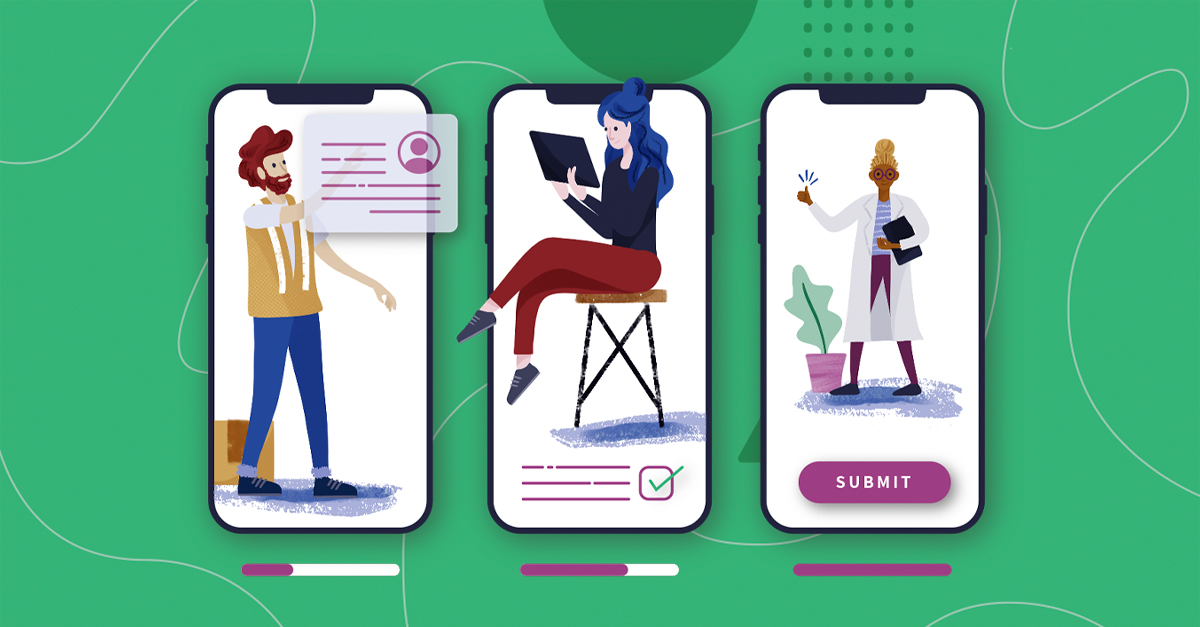
The Essentials to Onboarding Deskless Staff
Deskless workers – sometimes called frontline workers – are the individuals that don’t sit behind a desk to perform their jobs and spread across industries from healthcare, retail, and real estate to hospitality and manufacturing.
Why is onboarding so important for deskless teams?
Non-desk staff's onboarding experience is especially unique because, most often, these individuals are the face of a brand. They directly impact customer experience and business profitability in their ability to execute their roles.
However, according to this 2018 study, 30 percent of job seekers have left a job within the first 90 days, citing company culture and the day-to-day job not meeting expectations as the most common reasons for leaving. Onboarding is an opportunity to mitigate turnover risks and instill purpose into new hires. A well-executed onboarding strategy can also help new staff embed themselves into the organization more quickly and improve productivity.
A thorough onboarding strategy becomes especially vital during mass hiring to seamlessly integrate large quantities of new hires into the organization. (Think: post-quarantine rehiring.) By operationalizing the process across your organization, all new hires will have the same or a similar onboarding experiences, reducing confusion and instilling trust among employees.
What’s the difference between onboarding and training?
Often, onboarding and training are used synonymously in industries with deskless workers. Perhaps this is because training is so essential for new hires to become productive members of staff. However, there are important distinctions between the two that help inform an onboarding strategy.
Onboarding is the foundation of a new employee’s experience and answers the question of “why.” Why does my position exist? Why does the company exist? Onboarding is key to explaining the purpose of not only the new hire’s position and the value it brings to the organization, but also the purpose of the business and its greater vision.
Training is an element of onboarding focused on the “how.” How do I do my job? How do I help my team members? Training teaches new hires how to execute their duties and integrate into productive teams. Training is essential to the onboarding process, but great onboarding goes beyond logistics. It sets the tone for a new employee and – when done especially well – instills a sense of company culture out the gate.
What does my onboarding strategy need?
While many organizations realize the value of onboarding, it seems difficult to execute. According to a recent international survey, fewer than one-third of executives are satisfied with their organization’s onboarding process and 32 percent believed it to be below average or poor.
To design and implement an onboarding strategy, consider the following elements.
1. A plan that considers the employee experience.
To create an onboarding strategy, operators must have a clear understanding of their employees’ experience and lifecycle while at the organization. Mapping the journey from interviewing to exiting the organization helps identify bright spots and low points across the employee journey. From there, operators can identify opportunities for improvement and explore ways to amplify positive experiences during the onboarding process.
By understanding the new hires’ needs, operators can develop the right content and program to properly onboard their staff. Consider not only the “necessary” touchpoints (i.e. paperwork that needs signatures) but also the information that gives context and empowers new employees (i.e. brand breakdowns, team infrastructure, engagement programs, etc.).
2. Tech to centralize your content
Onboarding deskless staff presents unique challenges. How can leadership ensure that managers are activating consistent onboarding experiences across regions, especially without direct access to staff members (many deskless employees do not have a corporate email)?
The right technology platform can smooth out this process, operationalizing and automating key communications, resources, and paperwork.
Konverse is an all-in-one communication hub designed for deskless staff. It’s mobile-first design allows new employees to access vital information from their personal devices along the employee journey and includes onboarding, training, knowledge centers, intranet features, and more.
With a single source of knowledge, new hires and managers access information more easily, save time, and are able to get to work sooner.
3. A feedback loop to inform the process
As with any employee communication strategy, your onboarding approach should have a feedback loop built into the process. Consider how you can solicit feedback from new employees to learn how to adjust and improve the onboarding experience. Send out surveys and have managers check in with new hires to learn more about what content is helpful, if training is thorough enough, and if they feel set up to succeed at the organization.
The value of onboarding
Onboarding is the foundation of a great employee experience. When done well, it sets the tone and expectations for an employee and empowers staff to more quickly adapt to new roles. Employees feel more taken care of and can develop trust with the organization more quickly, improving productivity and reducing turnover over time.

